Xenoblade2 Original Soundtrack
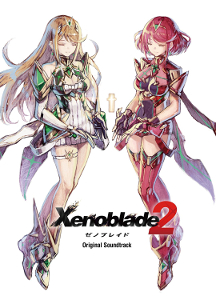 |
Album Title: Xenoblade2 Original Soundtrack |
| Record Label: Sleigh Bells / Procyon Studio |
|
| Catalog No.: SBPS-0025~30 |
|
| Release Date: May 23, 2018 |
|
| Purchase: Buy at Amazon |
Overview
In 2010, Monolith Soft released the original Xenoblade and with a team of composers (Yoko Shimomura, ACE+ (CHiCo, Tomori Kudo, Kenji Hiramatsu), Manami Kiyota, and Yasunori Mitsuda) produced a soundtrack that, while still having some flaws, was regarded to a monumental undertaking and a dream team of sorts that helped produced a memorable soundtrack and wonderfully fitting for the game itself. Of course, the next game they released, in 2015, was Xenoblade X, a game that focused more on exploration than story, but had a very divisive soundtrack composed by Hiroyuki Sawano and had some spotty implementation in the game itself. Fast forward to 2017, with the release of Xenoblade 2, a return to a more story driven experience that brought back most of the key players of the first game’s soundtrack. However, Yasunori Mitsuda would take a more substantial role, serving as the coordinator and sound director for the project, and Shimomura would not return, perhaps too busy at the time with Kingdom Hearts III. Did this same group of composers repeat their success in the soundtrack department and how does it compare to the first game’s soundtrack?
Body
Yasunori Mitsuda provides a lot of the cinematic music for the game and a lot of it references the main theme, “Where We Used to Be,” a beautiful piano tune that is melancholy, mysterious, and dreamy. However, as the game starts, you’ll first hear “Xenoblade II -Where it All Began-,” a sweeping orchestral tune with choir with some exquisite brass and choir that transitions perfectly into “Elysium, in the Blue Sky,” the first use of the game’s main theme. It’s a beautiful woodwinds/strings tune that helps to amplify the mysterious nature heard in the piano rendition and the superb orchestration and choral work helps give it an angelic quality. Other tunes in which the main theme can be heard is “The Towering Yggdrasil,” arranged by Kenji Hiramatsu, providing a grand orchestral rendition, the melancholy “Elysium in the Dream,” where piano, acoustic guitar, soft electronic elements help give it a dreamy quality to it while the violin led rendition of the main theme is full of raw emotion. There are also a slew of cameos in the ending tunes of the soundtrack.
“Our Hope” is an uplifting choral rendition of the main theme that gives off Xenogears vibes while “Parting” is a more sorrowful rendition with a strings led melody; however, as it progresses, it becomes more hopeful in tone. “The Tomorrow with You” is a romantic tune with piano, strings, and woodwinds that, as it progresses, veers more into pop territory and incorporates both the main theme and an instrumental version of the ending vocal theme. It’s quite beautiful and the transition feels natural. As expected, “Elysium” also features the main theme, although not as pronounced as other versions on the soundtrack. It’s a beautiful tune with uplifting strings and woodwinds with a dynamism to the piece with softer sections feeling more mysterious as snippets of the main theme appear before appearing in grandeur with sweeping brass and joyous choral voices. “White All Around Us” is a calm and peaceful tune that circles all the way back to the two opening tunes on the soundtrack.
Much like the first game, the main draw of the soundtrack are the various area themes present in the game. “The Ancient Vessel” is a mysterious woodwind and piano tune with choral additions and light electronica that sports a beautiful melody and a great atmosphere. Similarly, “Spirit Crucible Elpys” incorporates the same instrumentation to another beautiful melody. It’s no surprise these two areas are linked in a way. “Gormotti Forest” is a peaceful strings and woodwind tune with a beautiful and relaxing melody that captures the feeling of the area quite well and leads into the first vast open area of the game, Gormott.
Much like the first game, “Gormott” is this game’s Gaur Plains and the music also sports the same vibes. Its orchestral pops sound with a bright and invigorating melody full of strings and brass is extremely catchy and eventually incorporates a choir. I especially love the B section of the game. “Gormott/Night” is a slower tempo version with a more peaceful sound full of woodwinds and strings giving it a relaxing and warm atmosphere. Continuing with catchy melodies is “Kingdom of Uraya” with its airy woodwinds, majestic strings, and magical piano notes while the choral and brass tones give it additional musical texture. “Kingdom of Uraya/Night” is more piano and woodwind focused affair giving it a more peaceful effect while the choir and strings give it more of a romantic flair. “Mor Ardain -Roaming the Wastes-” is another catchy tune with a brass forward big band meets orchestral pops sound. The tune itself has some excellent drum rhythms, a fun sound, and a frontier vibe, particularly in the brass. “Mor Ardain/Night,” with its jazzy woodwinds and piano keep the big band sound in spirit while offering a more peaceful rendition.
More tranquil in approach is “Leftherian Archipelago,” with a flute melody shining atop piano, strings, and mallet percussion. The tune itself has a beautiful progression and a beautiful melody as well. The night version keeps the tranquility alive while focusing less on percussive elements. Woodwinds lead the melodic front atop a beautiful strings accompaniment. The incorporation of subtle vocals helps add to the atmosphere as well. Less successful than any other area themes is “Temperantia,” a tune full of frenetic strings, choir, a militaristic approach to percussion, and some electronic accompaniment. It’s urgent in nature, and while fitting its use in game, doesn’t live up to isolated listens. However, one of the best area themes in the game, “Tantal,” opens with an isolated choir before progressing into an extremely moving piece with light electronic support, sweeping strings, melancholy violin, and a choir supported melody. It’s beautiful, invigorating, super catchy, and captures the icy vibes of the area perfectly. “Tantal/Night” is a complete transformation opting for twangy electric guitar, acoustic guitar, and piano/keyboards. The soundscape itself is soft and the icy soundscape of the day version is kept.
Towards the end of the game, “Cliffs of Morytha” is an ominous tune full of electronic components and atmospheric synths. The synth melody itself has a mysterious and futuristic air to it and the oppressive nature of the piece. The strings melody itself is quite haunting and helps lift an otherwise less interesting soundscape to something more. Following that is, perhaps the best area theme in the entire game, “Land of Morytha.” The entire piece itself is haunting. From the beautiful desolate sounding piano, strings, and subtle electronica to the woeful violin lead, there is a sense of abandonment present throughout the piece. It’s absolutely stunning and the vocals only help to accentuate the haunting feel of the piece. The end result is absolute perfection. The main theme appears once again in the area theme, “Yggdrasil.” The main theme starts the piece in a choral rendition with futuristic electronic tones, giving a very Xenosaga feel to it. As it progresses, it becomes a bit more groovy with the addition of some pop drums and a guitar lead, supported by choir. It’s a beautiful rendition that really manages to showcase the main theme in a unique way.
To complement the massive areas, of course, are the various town themes. “Argentum,” a trading guild, has a certain vibe to it that reminds me of frontier music, much like a gold rush, particularly in how the strings and brass are incorporated, as well as the overall tempo. The melody itself is excellent and the inclusion of Asian instrumentation to counter the thrill of the piece with a lull in the energy that helps complement the decor of the area. It gives off a sense of hustle and bustle of a busy market place and fits the area perfectly. The night time rendition is more woodwind driven with a slower tempo and more Asian instrumentation resulting in a calmer rendition. “Torigoth” is a bright Irish inspired piece that, despite being composed by ACE, would fit right in in a Mitsuda soundtrack. It’s string focused melody and vibrant bass guitar work helps move the piece while harmonica gives it more of a rustic touch while the B section, with its strong melody, has an Irish dance-like feel to it. The night version, “Torigoth/Night” features twangy guitar, woodwinds, and cello, giving it a warm, peaceful feeling that helps accentuate the rustic nature of the piece. Garfont Mercenaries” is a piano and acoustic guitar tune with a super catchy and bubbly melody, and the occasional accordion. It carries a sense of relaxation and is quite peaceful. “Garfont Mercenaries/Night” slows the tempo and is more acoustic guitar and violin forward in its approach, lending a more peaceful sound to it than the original.
“Fonsa Myma” has a more regal sound to it, with its brass forward approach with flute and strings accents. There is definitely some pep to the march accompaniment. It isn’t as striking as some of the other town themes on the soundtrack, but it is quite enjoyable. Its night time rendition is peaceful with its acoustic guitar approach. It has a bit more of a pop vibe with its piano tunes and woodwinds. Militaristic in approach, “Alba Cavanich” is a strings and brass forward piece with a regal quality to it. In addition, there are some rock elements thrown into the mix alongside bright woodwind passes. The melody is also nice, but doesn’t particularly stand out as much as some of the other town themes. The night rendition is more tranquil with strings, acoustic guitar, and woodwinds and is certainly more memorable than the day version. Another more rustic tune is “Gramps,” the town theme for the main character’s hometown. Its warm melody, supported by strings, acoustic guitar, flute, and subtle choral usage, is quite wonderful. “Gramps/Night” is another warm rendition, but more woodwind focused in approach with a sparser use of accompaniment, particularly the acoustic guitar. As it progresses, the violin, acoustic guitar, and piano in the B section help give the tune a peaceful feeling. However, as an aside, the use of the name “Gramps” is rather strange, given the Japanese version translates to “Hometown.”
The last two sets of town themes are personal favorites on the entire soundtrack and both feature Irish choir, ANÚNA. “Our Eternal Land” and “We Are the Chosen Ones,” the day and night versions, respectively, both feature the same lyrics, but are executed quite different. For the former, it’s primarily female led with male support and features a fantastic performance done in the style of a beautiful hymnal. The interplay between the male/female harmonies is also quite exquisite. The latter, on the other hand, is more male driven and features a warmer sound. Of particular note is a male solo in the middle of the piece that really manages to give the piece an interesting twist. The other set of town themes is “Ever Come to an End” and “Shadows of the Lowlands,” the day and night themes. Much like the other set, there is definitely a hymnal quality to the day version and it, too, is once again, more female driven. Its beautiful melody is further accentuated by solo vocalists, bringing with it a haunting quality. The night version is, likewise, male dominated. The solo vocals give it an almost funereal sound, much like a dirge, with a stunning support from the rest of the choir, giving it a ethereal and spiritual quality.
Of course, there are also a plethora of battle themes, most of which are composed by ACE and Kenji Hiramatsu. “Exploration,” like many of the battle themes, is rock oriented and features plenty of guitar riffs, synthesizer, and is rather percussion heavy. The electric guitar melody and funky bass sections are both top notch. “Incoming!” is an intense orchestral rock tune with speed metal drums that are balanced by a beautiful strings melody that is both catchy and invigorating, especially in the B section. “Battle!!” is, too, an orchestral rock tune with an invigorating melody that is reminiscent of Xenoblade in style with wailing guitars, piano runs, and fast paced synths. Likewise, “You Will Recall Our Names” is another strings and rock tune with an original Xenoblade style influence. There are also some brass moments and some softer melodies heard throughout, but I’m not as enamored with this tune as some of the others. It’s a good tune, but doesn’t stand up to some of the others on the soundtrack. “Monster Surprised You” combines orchestra, rock, with some jazz tones, funk, and pop to create a dynamic tune with a great melody while “Those Who Stand Against Our Path,” a synth rock tune with orchestral accompaniment and plenty of guitar noodling that gives off an anime soundtrack vibe. It’s an exciting tune, but one that I don’t revisit as often as others.
“Death Match with Torna” blends synth rock, metal, and Japanese instrumentation to create an exhilarating sound and an engaging melody with tense strings and chanting. It definitely gets the blood pumping while “Driver VS” is very Falcom-esque in nature with its violin led melody atop electronic and rock accompaniment. One of the best battle themes on the album is “Battle in the Skies Above,” an intense and vigorous orchestral soundtrack with electronic accompaniment. The percussive elements to the piece really help drive it forward and the tension in the strings accompaniment and brass is powerful. However, it is offset by an uplifting melody at time that gives a feeling of hope. The end result is motivating. “Praetor Amalthus -The Acting God-,” by Mitsuda, is a choral piece with a militaristic sound. Brass, which is the highlight of the piece, and woodwinds dominate the soundscape and the overall tone of the piece is ominous and dark. Lastly, “After Despair and Hope,” the final battle theme, is exquisite. Beautiful, haunting choir combines with piano, strings, and brass to give a dramatic tone before transitioning to a short appearance of the main melody heard in “Counterattack,” one of the strongest pieces on the entire soundtrack. Keyboard solos, distorted electronica, and electric guitar give it some prog rock influence. In the end, the piece has such gravitas to its atmosphere.
Speaking of “Counterattack,” used in one of the earlier cutscenes in the game, its combination of orchestra, rock, and piano supports a stunningly beautiful melody. It’s an incredibly dynamic piece with a rousing tone. There are a few other key story related tunes, such as “The Decision,” blending pulsing electronic beats with a determined orchestral sound. It’s haunting, beautiful, and the use of choir helps lift the melody even more. Likewise, “Past from Far Distance” is a solemn and mysterious choral tune that gives off a Xenogears sound. The male and female sections of the choral parts are wonderfully contrasted resulting in an excellent atmosphere. To round out the cutscenes are “Drifting Soul” and “One Last You,” the vocal tunes of the game, both sung by Jen Bird. The former, written by ACE, is a pop tune, through and through, starting off with vocals against a backdrop of a simple piano melody before starts incorporating a beautiful strings accompaniment and drum pad. It is quite memorable. There is also a violin version of this tune that replaces the vocals with violin while carrying the same general sound. The latter ending vocal, by Mitsuda, also retains the pop feel, much like many of his vocals for the series. The vocals are powerful and the acoustic backbone of the piece, including solo, help provide the support the tune needs. The incorporation of the main theme in the strings is a welcome addition. While it may not be his best vocal theme for the Xeno universe as a whole, it is still rather enjoyable.
If you are lucky enough to find the Type B version, it includes a bunch of jingles found in the game. However, in addition, there are five piano arrangements of “Gormott,” “Battle!!,” “The Ancient Vessel,” “Counterattack,” and “One Last You,” performed by Ivan Linn. The piano performance is quite virtuosic and generally keep the spirit of the original intact. However, I feel that some of the depth is lost at times due to the single instrument format. They are certainly a nice bonus, if you are able to find Type B online, but I wouldn’t call it a dealbreaker if you can’t find this version.
Summary
For me, Xenoblade 2 Original Soundtrack is the strongest in the Xenoblade series. There are plenty of fantastic tunes across the contributions of all composers and the melodies stuck with me a bit more than they did for the original Xenoblade. Fans of the first game’s soundtrack will certainly enjoy the offerings across this massive release, whether it is the sprawling area themes, the various town themes, or the engaging battle themes. If you still haven’t picked this up, there’s still time, either digitally or physically.
Do you agree with the review and score? Let us know in the comments below!
5
Posted on May 1, 2019 by Don Kotowski. Last modified on May 22, 2019.

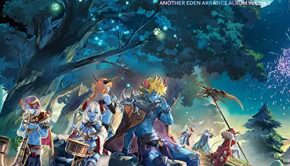
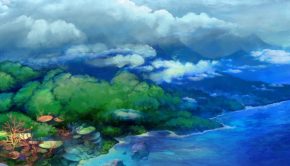
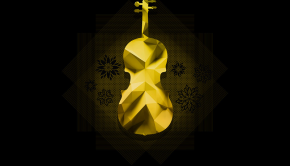
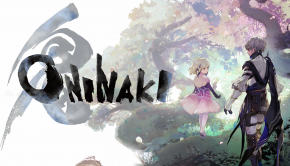










I’m glad to see this review. Since the game came out in Dec. 2017 I have more and more grown to appreciate this soundtrack. I come back and listen to the Xenoblade 2 soundtrack more than any other game OST in a long time. More than Octopath. More than Celeste. More than Gris. More than Xenoblade 1 or X.
Part of its strength is its diversity. It’s got a bit of everything in there, and it’s all done so well. Also Mitsuda-san’s use and development of melodic motifs throughout is fantastic and gives the entire OST an artistic cohesion that surpasses many other soundtracks.
But perhaps best of all it is also a near-perfect pairing of musical expression with the emotional weight of the story. Listening to it from beginning to end is really a joy. When they do a Xenoblade 2 concert and perform it live I will certainly attend!
You do a fine job of identifying the connections to previous games, which are fun to discover. You didn’t mention it, but to my ears “Counterattack” is simply a revamped version of “Confrontation with the Enemy” from Xenoblade 1. It doesn’t surprise me because I believe that Kenji Hiramatsu was a part of ACE+ at the time and he probably was a significant contributor to that original piece. Anyway, it’s little connections like that which makes it fun for Xeno-fans.
Anyway, thanks again for the well-needed review of this fantastic soundtrack. I’m certain that it is a piece of music that will stand the test of time. I’ll be listening to it for years.
Hi Chris,
Thanks for the kind words! Sorry for the delay in responding!
Best,
Don